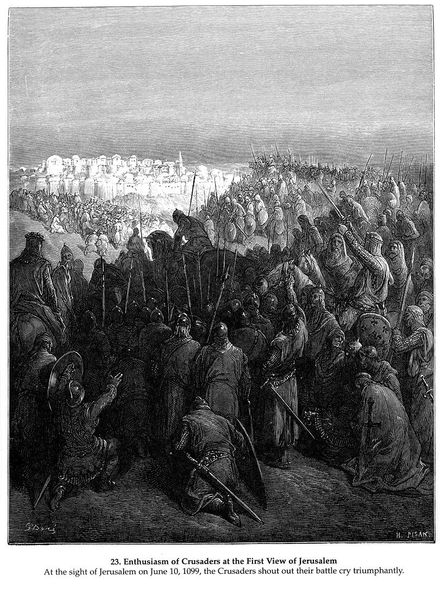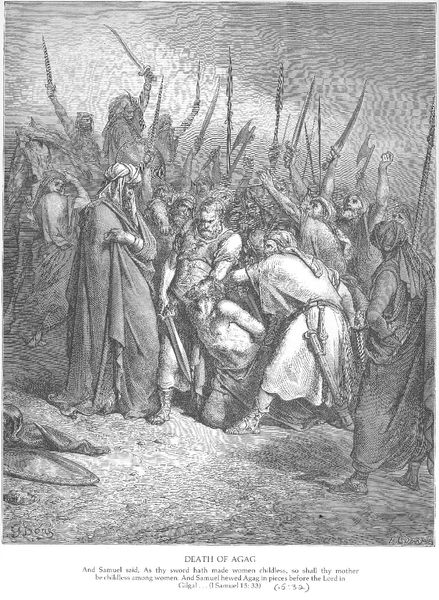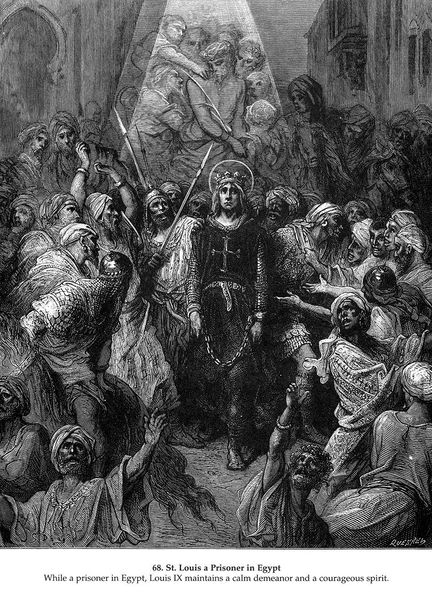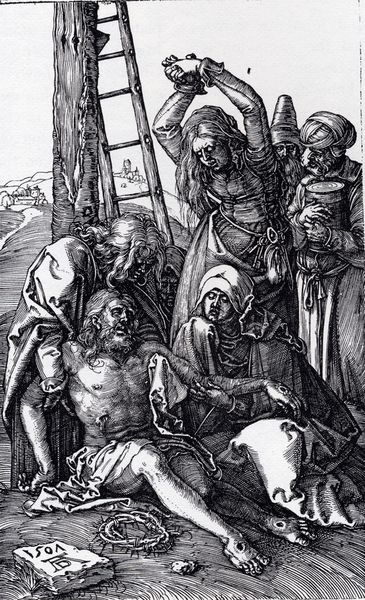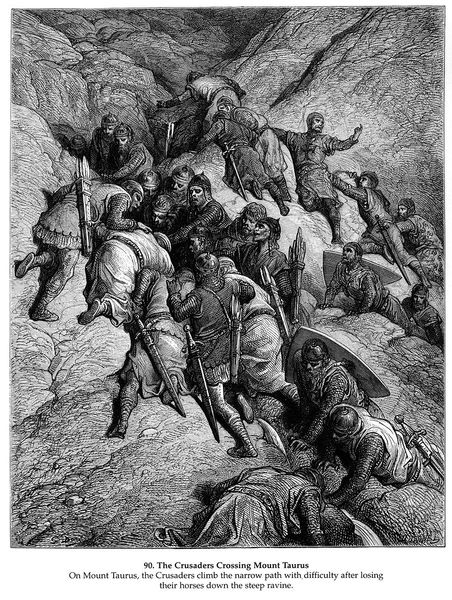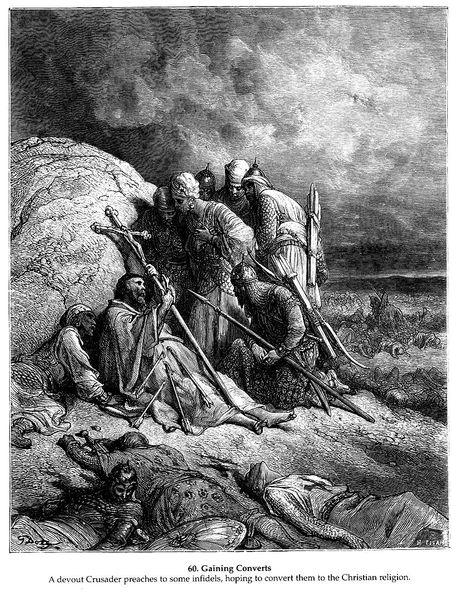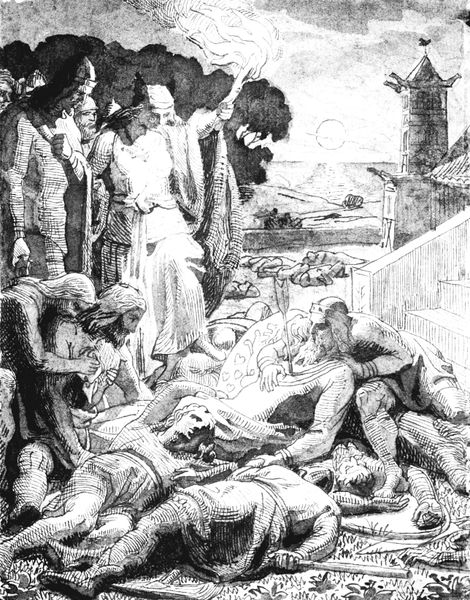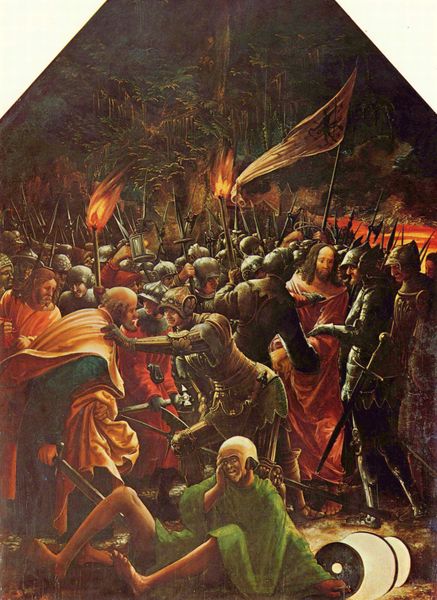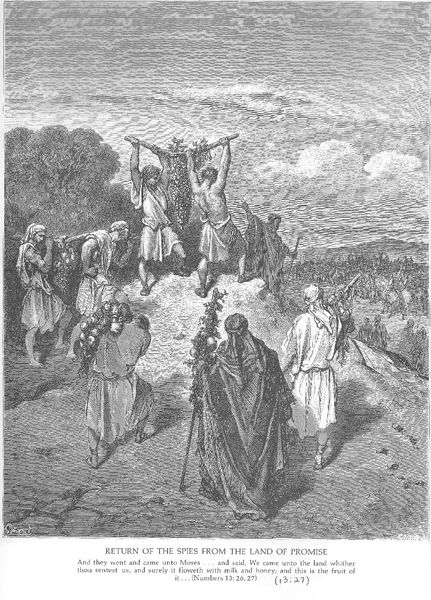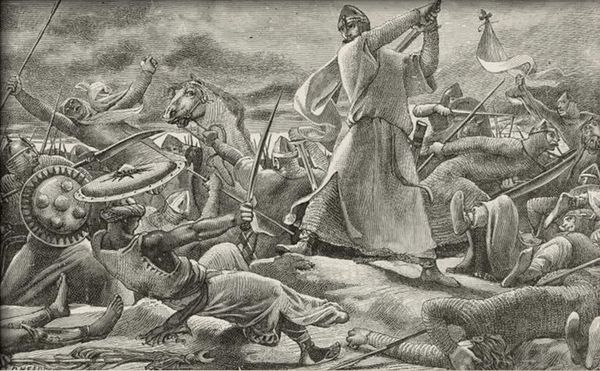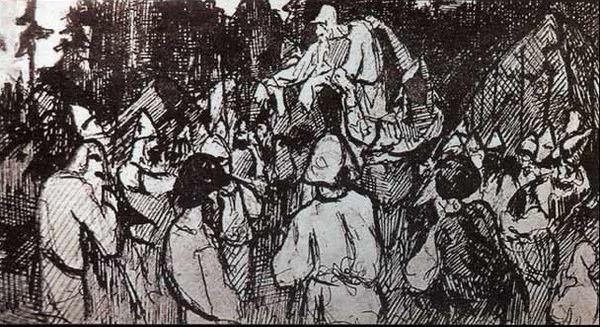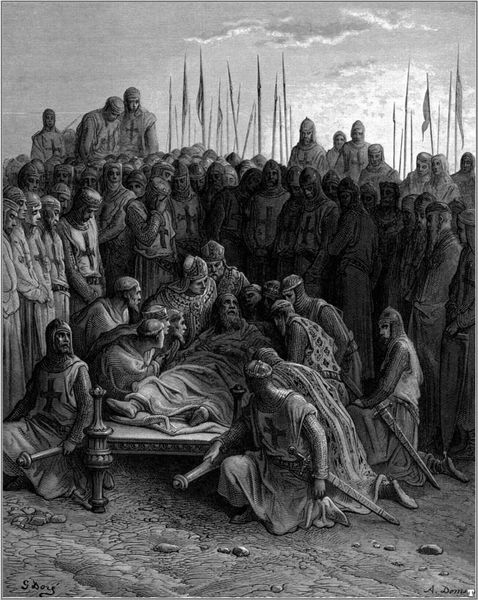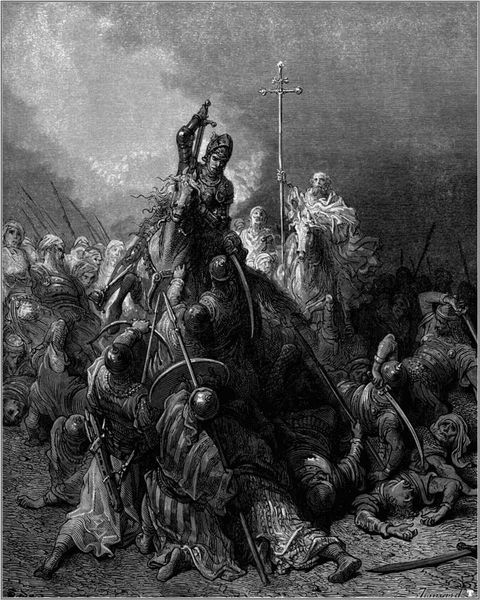
Copyright: Public domain
Editor: This is "Josué épargne Rahab" by Gustave Doré, created in 1866. It's an engraving, so we’re seeing a print of the image. It's pretty graphic – bodies strewn on the ground contrast sharply with the figures standing tall in the background. What strikes you when you look at this piece? Curator: The first thing that grabs my attention is the process of production. This isn't simply a drawing; it's an engraving, a painstaking process of carving into a metal plate. Consider the labor involved, the artisan meticulously translating Doré's vision. Think about how many prints could then be made. This is about dissemination as much as it is about creation. What do you make of that juxtaposition? Editor: It’s almost a democratization of art… the ability to mass produce images. Does that impact the way we consider it 'high' art? Curator: Exactly! This challenges that very hierarchy. We see here a subject from religious narrative, rendered with what some might consider a more “common” method. Engraving allowed for widespread distribution of biblical stories. But let’s look closer: Doré uses light and shadow masterfully. How does that affect the message being sent through labor and method? Editor: It directs your gaze. Despite the grim subject matter, there’s an elegance to the printmaking process, even with the contrast between the light figures and the shadowed fallen bodies. It adds a layer of... sophistication, maybe? It's not just documenting the narrative; it’s making a statement about its inherent drama through artistic practice. Curator: Precisely. And notice how the detail is dependent on the tools and the skill of the engraver. This isn’t just about Doré’s original sketch; it's about the whole chain of production and consumption. Editor: It changes my whole perspective! I was initially caught up in the subject, but now I see the artistry is also rooted in its means of production and distribution. Thanks for pointing that out. Curator: It is so important to remember to focus on the making. Thanks for walking through this with me.
Comments
No comments
Be the first to comment and join the conversation on the ultimate creative platform.
